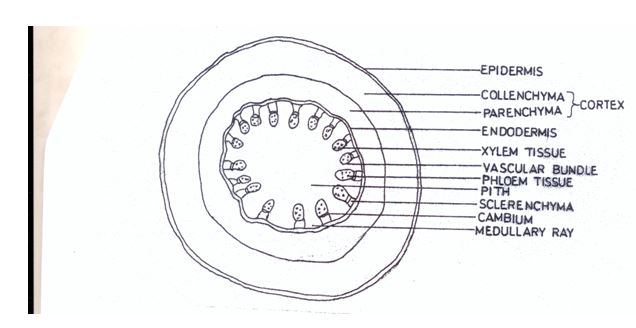Majority of the candidates that answered this question performed impressively. This was the most popularly answered and passed question. The problem most candidates had was in the drawing and observing the stained transverse section of waterleaf realistically.
The expected answers include:
2 (a) (i) Life process in mammals associated with specimen E
External Respiration/Respiration/Gaseous exchange/Breathing.
(ii) Similarities between Specimens E and F
- Both richly supplied with blood capillaries/vascularised;
- both have thin surface;
- both are moist;
- both have large surface area.
(b) (i) Habitat of specimen F
Land/Terrestrial/Moist place/Pond.
(ii) Observable Features that adapt specimen F to its habitat
- large bulging eyes for wide vision;
- streamlined body for easy movement in water;
- webbed digits of hind limb(s) for swimming;
- muscular long hind limbs for hopping/jumping;
- stout short forelimbs for absorbing shock on landing;
- presence of poisonous gland for protection against predators;
- moist skin for gaseous exchange/breathing/respiration.
(c) (i) Observation
Cortex stained blue black Starch present in the cortex.
(ii) Part of stem where food is stored
Cortex/parenchyma.
(iii) Tissues for transportation in G1
Xylem; phloem.
(iv) Supporting Tissues in G1
Collenchyma, sclerenchyma, xylem, parenchyma.
(d) Drawing of specimen G2

Drawing of Transverse section of the stem of specimen G2/Waterleaf plant

Details (D)
VR – Vascular bundles arranged in ring at least four vascular bundles shown
WP – Wide Pith
ED – Epidermis in double lines
CS – Cortex shown
Labels
Vascular bundle/Xylem/phloem, pith, cortex/collenchyma/parenchyma, epidermis, medullary ray.



